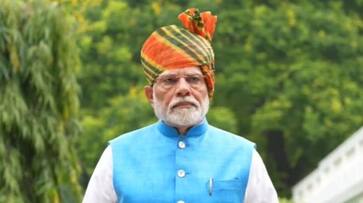India is prioritizing green hydrogen production to enhance energy security, cut carbon emissions, and create jobs, with ambitious goals under the National Hydrogen Mission.
Prime Minister Narendra Modi has once again highlighted India’s ambition to become a global leader in green hydrogen production, a crucial step toward energy security and reducing dependence on conventional fossil fuels. During his recent Independence Day speech, Modi emphasized the urgent need to transition to renewable energy sources, viewing green hydrogen as a key solution to addressing climate change. This shift not only promises to reduce carbon emissions but also to create new green jobs and stimulate economic development.
Understanding Green Hydrogen and India’s National Hydrogen Mission
Green hydrogen is produced through electrolysis, where water is split into hydrogen and oxygen using electricity from renewable sources like solar, wind, or hydropower. This method ensures that hydrogen production is carbon-free, distinguishing it from grey hydrogen, which is derived from fossil fuels and emits greenhouse gases, and blue hydrogen, which captures carbon emissions but is not entirely carbon-free.
To spearhead this transition, India launched the National Hydrogen Mission, sanctioned by the Cabinet on January 4, 2022. With a financial outlay of Rs 19,744 crore, including Rs 17,490 crore for the Strategic Interventions for Green Hydrogen Transition (SIGHT) program, the mission aims to position India as a global hub for green hydrogen.
The ambitious targets include producing at least 5 million metric tons (MMT) of green hydrogen annually by 2030, reducing fossil fuel imports by approximately Rs 1 lakh crore, cutting 50 million metric tons of greenhouse gas emissions each year, and creating around 6 lakh jobs in the green energy sector. Additionally, the mission plans to increase India's renewable energy capacity by 125 gigawatts (GW) to support hydrogen production.
Developing Green Hydrogen Hubs and Infrastructure
Under the National Hydrogen Mission, the Indian government is focusing on establishing Green Hydrogen Hubs, which will facilitate the mass production and use of green hydrogen. These hubs, planned near industrial and manufacturing areas, aim to meet the high demand for green hydrogen and support the necessary infrastructure development. To address the challenges of hydrogen transportation, Rs 400 crore has been allocated for setting up two pilot centers by 2025-26.
India is also upgrading key ports like V. O. Chidambaranar in Tamil Nadu and Paradip to support hydrogen import and export facilities, positioning the country as a significant player in the global hydrogen market. The adoption of green hydrogen is expected to bring numerous benefits, including reducing reliance on fossil fuels, cutting carbon emissions, and helping carbon-intensive industries like steel and cement lower their environmental impact.
Last Updated Aug 16, 2024, 10:09 AM IST









![Salman Khan sets stage on fire for Anant Ambani, Radhika Merchant pre-wedding festivities [WATCH] ATG](https://static-gi.asianetnews.com/images/01hr1hh8y86gvb4kbqgnyhc0w0/whatsapp-image-2024-03-03-at-12-24-37-pm_100x60xt.jpg)
![Pregnant Deepika Padukone dances with Ranveer Singh at Anant Ambani, Radhika Merchant pre-wedding bash [WATCH] ATG](https://static-gi.asianetnews.com/images/01hr1ffyd3nzqzgm6ba0k87vr8/whatsapp-image-2024-03-03-at-11-45-35-am_100x60xt.jpg)


